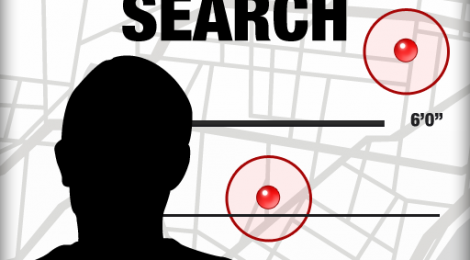
Even the innocent should worry about sex offender apps
The average citizen may not feel that they have anything to fear from the rise of apps that promise to identify sex offenders in their area but they are part of a worrying trend that should act as a warning about what happens when personal data is flattened out and sliced up into apparently user-friendly services.
Sex-offender-locator apps proudly boast that they can help users find sex offenders in their local area. But they aren’t, of course, actually detecting anything. US federal law mandates that every state must collect information on convicted sex offenders and make it available to the public online. Sex offender locator apps take this freely available data and repurpose it.
After loading the app on your phone, you are presented with a map of your surrounding area and an icon, such as the commonly used blue dot, to show your own position. As you move around your neighbourhood, the app tracks your movements and the blue dot moves accordingly. At the same time other dots or pins also appear on the screen. These are most often coloured red and indicate the address of a registered sex offender. Clicking on a pin opens a profile containing an image of the sex offender, some personal data such as their age, sex, ethnicity, date of birth and address, and a list of convictions together with the date of those convictions.
At first sight these applications seem helpful. Many parents would want to know if there was a sex offender living next door for understandable reasons. And since SORNA mandates that local police forces should notify communities when sex offenders convicted of more serious crimes move into their neighbourhood they aren’t necessarily providing much more information than users would receive without an app.
There is a crucial difference though. As well as informing residents, SORNA also mandates that crime prevention teams work with local communities to explain how to keep children safe, how to talk to them about stranger danger and sexual abuse and how to deal with having an offender living in the local vicinity.
It is this contextualisation that is notably absent from the sex offender identification apps that are currently available. It is always good to know who we are living next to but without further resources such knowledge becomes at best meaningless and, at worst, the root of paranoia and fear.
The mapping illusion
Reoffending rates for sex offenders are far lower than many other crimes but these apps don’t give you that information. They might provide you with a sex offender’s last known address but fail to tell you that an alarmingly high percentage of convicted sex offenders have no fixed abode.
And it’s important to note that even though SORNA is a national law, different states have drastically different rules for which crimes will land you on the sex offender register. Few would argue that a violent child rapist should be included but in some states, you can end up on the register for having consensual sex in a public place or even urinating in an alleyway.
Then there is the mapping of sex offenders. Maps are amazing things. They tell us where things are – most of the time, when they work. Google Maps is only as accurate as the last time it was updated. The same can be said for these applications.
Worse still, the SORNA mandated databases are, frankly, a mess. There is no funding to implement SORNA and as a result, the information contained in them is often out of date and sometimes incorrect.
The mapping techniques employed by sex offender apps are therefore doubly illusory. The live tracking of our own movements by these apps belies the inaccuracies of the databases and suggests that what we are seeing is up to date, perhaps even being provided in real time, when in fact it isn’t.
Mapping us all
You may not feel concerned about this. You may think that sex offenders deserve what they get. But the prospects of people being affected in the same way, even if they’ve never committed a crime, are on the horizon.
In the UK, for example, discussions are ongoing about making patient records and data held by the NHS available to third parties. It has not yet been decided how these third parties will use this data but already companies have been found to be offering mapping services based on the information.
You may have been depressed in your teenage years. You may have even contemplated suicide. You may now be living a healthy, happy life and have long forgotten those anxious adolescent years. But if you reported it, if you sought help or advice from the NHS, then that record is still there.
And when data becomes compressed by third parties, when it gets flattened out into one single data stream, your present and your past collide with potentially huge ramifications for your future.
When it comes to personal data – of any kind – we not only need to consider what it will be used for but how that data will be represented, and what such representation might mean for us and others.
![]()
Sharif Mowlabocus does not work for, consult to, own shares in or receive funding from any company or organisation that would benefit from this article, and has no relevant affiliations.
This article was originally published on The Conversation.
Read the original article.
Recent Comments